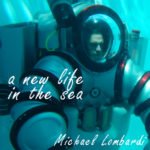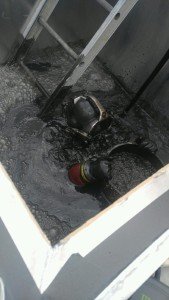 Yesterday, our local news featured a piece about Stop & Shop’s regional compost facility in Assonet, MA. This is such an amazing facility, and hopefully becomes a model of efficiency for other large companies:
Yesterday, our local news featured a piece about Stop & Shop’s regional compost facility in Assonet, MA. This is such an amazing facility, and hopefully becomes a model of efficiency for other large companies:
http://turnto10.com/news/local/stop-shop-facility-turns-food-into-energy
Some might ask how in the world this seems to excite me? Well, environmental advocacy aside, I’ve been up close and personal with this place – being one of three to dive in!
I’ve done some cool projects, but this one stood out, at least within the last few years…not only was it cool, but it was hot at the same time…
A stand pipe located in the digestion tank had been compromised at a joint adjacent to where the pipe penetrated the tank walls through a flange. As much as divers are the last people many want to call in these circumstances, it was somewhat emergent, and so there we were. This posed a number of unique challenges which is what got me excited about the job. These challenges meant lots of risk mitigation, sound planning and coordination, and a little bit of innovation to create a safe immersion environment.

- First, the fluid was about 100 degrees F. At that temperature, sweating doesn’t help with cooling the body very well. Couple this with the requirement to wear a vulcanized rubber suit for protection from the microbial slurry in the tank made heat stress a real concern. On fairly short notice, we designed and built a cooling system for the diver which made 20-30 minute immersions tolerable.
- Second, entry into the compost tank meant “opening the hatch”. The system is designed to be closed to preserve the microbial culture. A baffle was designed to be installed at the point of entry which restricted ambient exposure to a small surface area. This baffle also kept the gasses produced in the tank (methane and CO2 primarily) isolated from the work crew. So, with proper decon in and out of the tank, the culture was preserved and that meant a huge savings in not having to start the culture over.
- Third, blackwater conditions. This isn’t all that inordinary in commercial diving, but this job was blacker than black. Not only was the dive within an enclosed space, but the fluid was 20% organic solids meaning that not even a light would help with visibility. Our crew had to advise on designing the pipe repair section such that it could be installed in the blind and also with little tactile reference given the requirement for bulky rubber gloves that impeded dexterity.
Good times had by all!
These are the moments that make we divers proud. There indeed remain challenges that are not possible to be overcome without human intervention. The hard part is being ready when the phone rings.. That state of readiness is where the investment lies in proficiency for advanced diving operations, and why we’re so expensive!
Need a compost diver? www.newenglanddivingservices.com

